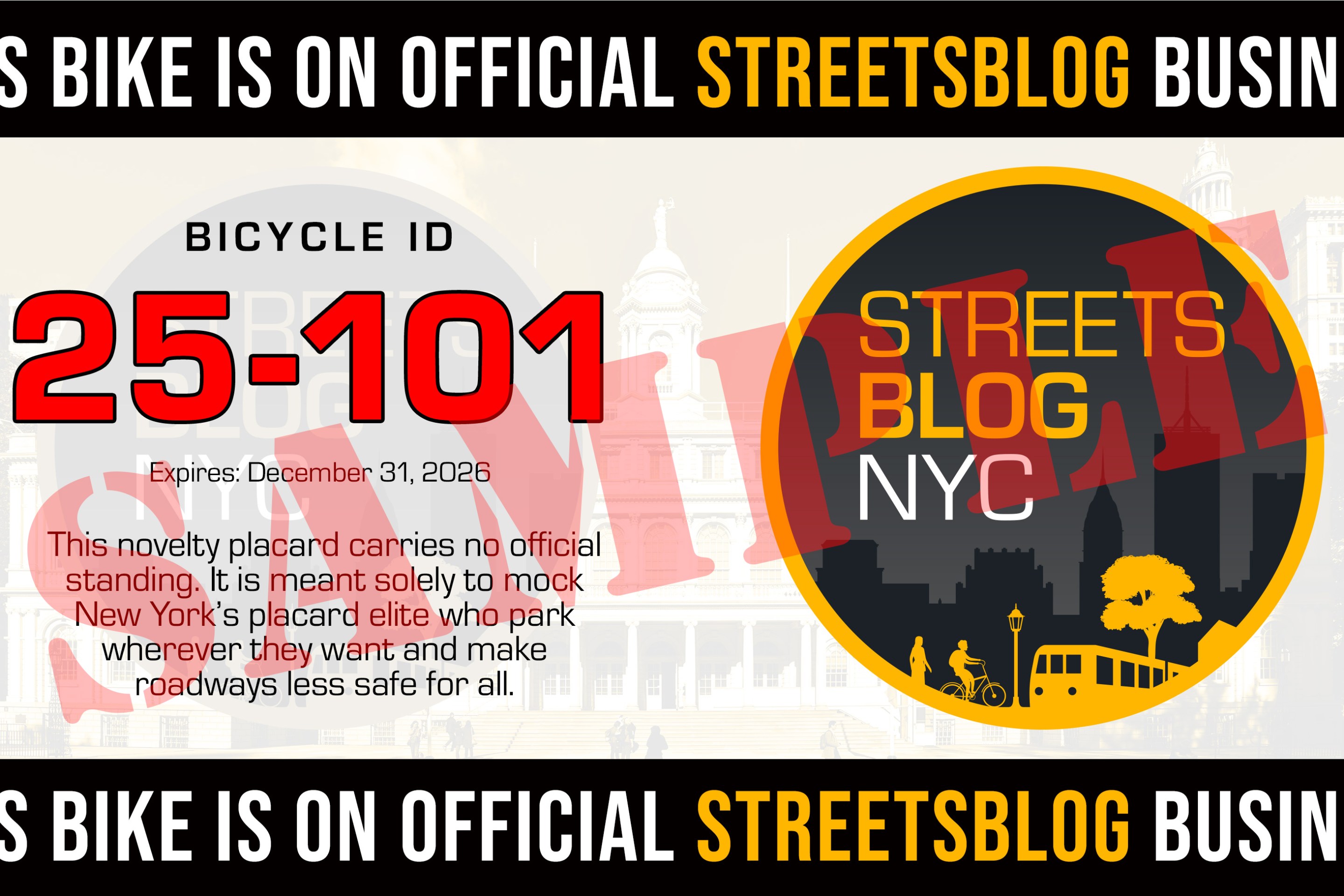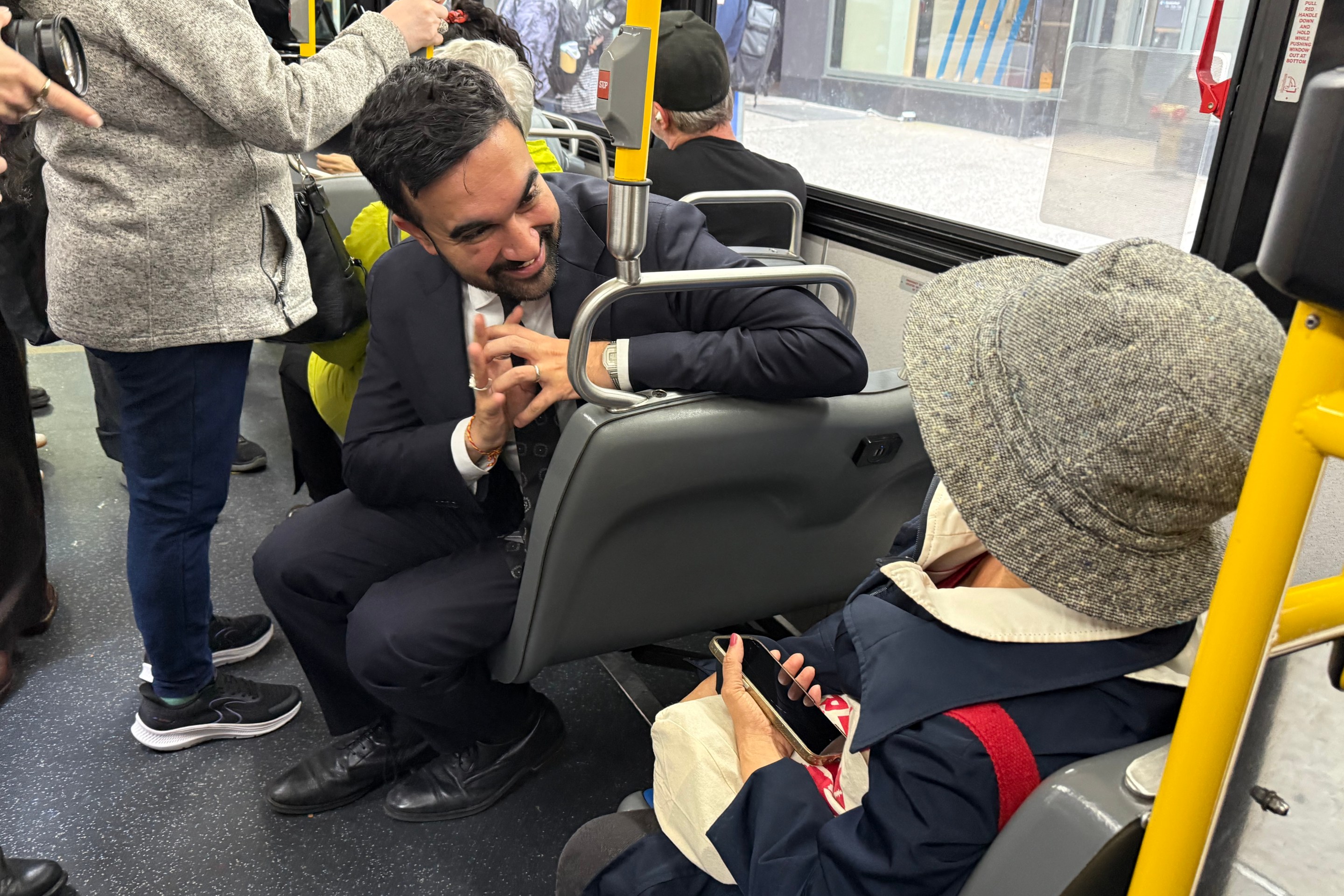Hours after Mayor Bloomberg spoke about the dividends businesses can reap from livable streets infrastructure, a group of about 30 business improvement district staffers at the International Downtown Association annual meeting listened to a panel on the specifics of creating bike-friendly business districts.

The panel, moderated by Andy Clarke, president of the League of American Bicyclists, featured Tiffany Bromfield, CEO of San Diego's BID Council, April Economides of Alta Planning + Design, Megan Kanagy from the Downtown DC BID, Miller Nuttle of Transportation Alternatives, and Josef Szende, director of the Atlantic Avenue BID in Brooklyn.
The panelists brought different perspectives on how to implement a bike-friendly business district program. With 145 city blocks and an $11 million annual budget, Washington, DC’s downtown BID has the capacity to implement its own comprehensive bike rack installation program with the local DOT. In Long Beach, a city-led initiative worked with business owners in four retail areas. In San Diego, an umbrella organization provides technical assistance to local BIDs interested in bike-friendly initiatives, while here in New York, citywide bike advocates brought resources to a small BID's effort to become a bike-friendly business district.
What is a bike-friendly business district? Although each is different, they all have a common theme: Making bicycling a central part of how business owners, employees, and their customers travel to and get around the area, with a focus on people who live within two miles of the business district. The effort can involve discounts for customers who arrive by bike, shared cargo bikes for businesses making deliveries, new bike racks and corrals, and advocating for protected bike lanes or other street design changes that make it safer and more convenient to bike.
Despite the different approaches, all the cities ran into a common problem: "Pushback," Economides said, adding that business owners often feel ignored. "It's ideal to go in beforehand," she said, and meet busy business owners when and where they are available.
Even with a robust outreach program -- TA went door-to-door with businesses along Atlantic Avenue -- there will remain skeptics. "There are obviously some business owners who aren't receptive to bikes," Nuttle said. In those cases, TA will be ready with local facts and figures about bicycling, but will focus on where it can find support.
In downtown DC, the BID would often follow up with building owners who didn't want a bike rack installed. "We'll come back to people in three years and they'll probably support it," Kanagy said. With infrastructure like bike racks and protected bike lanes, business owners are usually just skeptical of something new. But after Capital Bikeshare launched and the city installed its first protected lane on 15th Street NW, Kanagy said attitudes changed. "They'd already seen it, and it was kind of business as usual," she said.
In the end, the hard work pays dividends for street safety advocates. "It pretty fundamentally changed the conversation around bike lanes and bike parking to be a positive relationship with business," Nuttle said. TA has signed up 450 businesses in all five boroughs for its Bike-Friendly Business program, and launched two bike-friendly business districts, one on Atlantic Avenue and another covering the East Village and the Lower East Side. There, TA surveyed shoppers on how they got around, and found that 95 percent of respondents said that they usually walk, bike or take transit to the neighborhood.
Even in areas where shoppers don't rely on cars, parking is a big issue for many merchants. "A common misperception by a lot of business owners, and I think a lot of us in BIDs, is that most people come via car," Economides said. In reality, merchants overestimate the percentage of their customers who arrive by car, and the parking is often used by store employees and local institutions. Parking meter reforms, including variable rates and progressive rate structures, can help open up parking spaces and relieve some of the pressure that might lead business owners to see bike initiatives as a zero-sum game, Economides said.
"They want free or cheap and convenient parking for their customers. Guess what? That's what bike parking is," Economides said, adding that bike racks are cheaper to install and maintain than car parking for the same number of drivers. On-street bike corrals can often be installed near intersections to daylight street corners and improve visibility for drivers and pedestrians, blunting potential opposition.
Even if business owners might overestimate their neighborhood's reliance on driving, "they want to be in sync with their customer base in the surrounding neighborhoods," Szende said, noting that areas around Atlantic Avenue include some of New York's most bike-friendly neighborhoods.
In the end, the goal is to market the businesses to customers and improve sales. To achieve that goal, the Atlantic Avenue BID held its bike-friendly business district launch on Saturday. Council Member Brad Lander arrived on a Citi Bike, and about 20 people came out for a ride to local businesses. "This isn't just for hobby bicyclists," Szende said. "This is for people in New York City who are spending real money."





